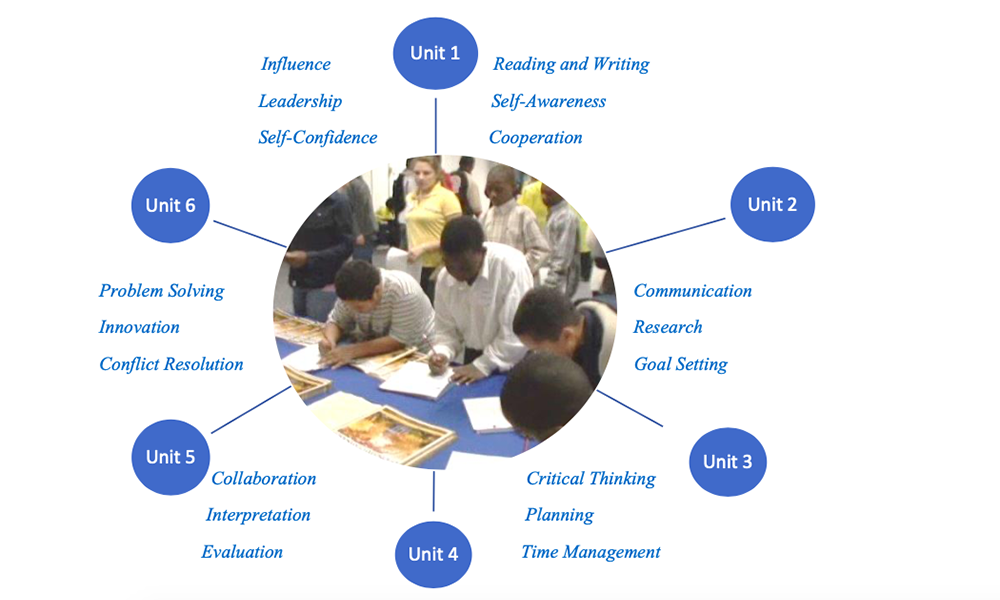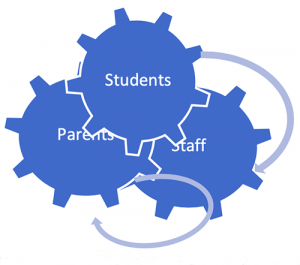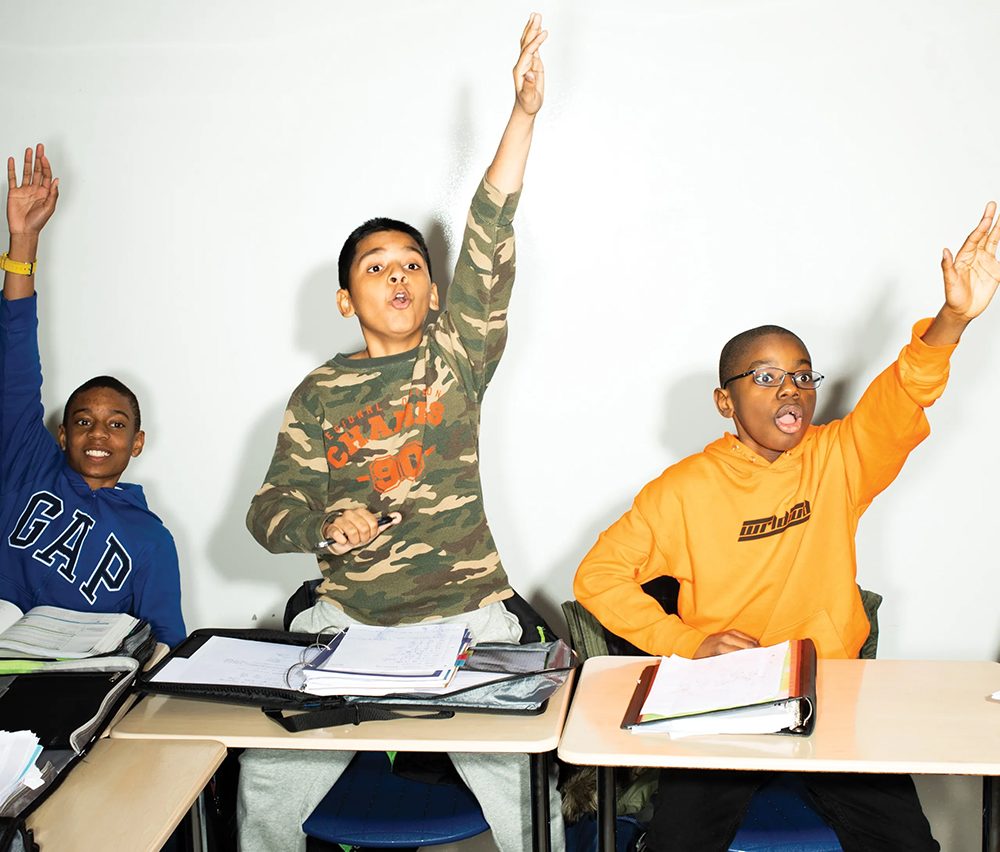Engaged for Action Curriculum Overview
This program is designed as a model service to support academic and social achievement through a project-based service-learning approach. The program seeks to encourage achievement motivation and develop leadership capacity among students.
In the initial program cycle, students in upper elementary and middle school grades are engaged in after-school personal development and service activities that support and strengthen core academic skills in literacy and numeracy, while inspiring self- confidence, efficacy and civic engagement. Instead of isolated focus on reading, writing and mathematics proficiency, for example, EFA students, working in clubs or teams, use reading, writing, research, data collection, data analysis, critical thinking and public speaking skills to identify, plan and take actions that address community and social justice issues about which they are passionate.
In the subsequent program cycle, the EFA work is designed to more specifically mobilize students as leaders who understand, interpret, and help in developing a school-wide culture that fosters civic engagement and community problem-solving.
Depending on each school’s interest, the students’ service might also support use of a model for peer problem-solving related to behavior and academic support. As student leaders emerge, they lead sessions designed to foster positive relationships so that it becomes “popular” to engage with peers and work collaboratively.
The program convenes in two nine-week sessions. The first three units emphasize becoming an engaged community that plans and acts to achieve a positive change, allowing students to experience a five-stage process:
- Form the Service Community
- Identify Action Issue
- Plan & Review the Action
- Conduct the Action
- Document/Share the Action Results
The final three units emphasize developing leadership abilities within an engaged school culture. Students are expected to identify personal and community achievement goals, seek-out enrichment opportunities and demonstrate self-advocacy skills.
This program approach borrows much from national service ideas, specifically as they have been defined by the Corporation for National and Community Service. This approach also makes operative the guidance of the National Research Council and Institute of Medicine as presented in Community Programs to Promote Youth Development (2004), edited by J. Eccles and J. A. Gootman. The research recommends an asset identification and development approach across four major developmental domains: physical, intellectual, psychological/emotional and social through programming that is consciously conducted in a positive developmental setting.
Positive developmental settings are established by the adults who interact with youth, as well as by the programming goals of the host organization. These should include the following (See Eccles and Gootman, 2004):
- Physical and psychological safety and security
- Structure that is developmentally appropriate, clear expectations for behavior including opportunities for youth to participate in governance and rule-making
- Emotional and moral support
- Opportunities for youth to experience supportive adult relationships
- Opportunities to learn how to form close, durable relationships with peers
- Opportunities to feel a sense of belonging and being valued
- Opportunities to develop positive social values and norms
- Opportunities for skill building and mastery (academic and self-management)
- Opportunities to feel and demonstrate mastery in one’s environment (efficacy)
- Opportunities to make contributions to one’s community
- Strong links between families, schools, and broader community resources
We take this guidance into schools as the basis for critical focus on developing self- advocacy skills of students. This work references emerging research that recommends personal development and the integration of social-emotional learning as a foundation for establishing rigorous curriculum. Specifically, these approaches assist schools in focusing on accelerating learning, raising expectations for performance, normalizing help-seeking behavior, including within peer-to peer interactions. (See K. Hulverson and S. Mulholland, 2018. Journal of Research in Innovative Teaching and Learning. See also Finnan, C., & Swanson, J.D., 2000. Accelerating the Learning of All Students: Cultivating Culture Change in Schools, Classrooms and Individuals.)
Engaged for Action Builds Leadership & Problem-Solving Skills that Lead to Success in School & Life

NOTES FOR SITE-BASED PLANNING
Follow a consistent pattern in facilitating after-school sessions:
- Greetings
- Ice Breakers
- Post and Discuss Objectives for the Meeting or Session
- Activity Period
- Closing Circle
- Reflection and Journaling Time
THE CURRICULUM PLAN & THE PLANNING PROCESS
This curriculum provides guidance for conducting after-school activities over the course of two nine-week program cycles that each feature three units of activities. To reflect site-based realities, as well as student input, periodic staff meetings allow for on-going collaboration that fosters a dynamic and responsive program culture. A significant goal of this work is to support schools in developing their capacity to foster achievement motivation, civic engagement, and student leadership. A major outcome of this work will be student-led positive behavior campaigns that foster an achievement-focused culture. Student leaders might focus on a range of social justice issues including, but not limited to civic engagement and voting rights, conflict resolution, as well as responsible environmental citizenship.

Expected Outcomes
➢ Increased perceptions of students’ abilities to solve problems and contribute to inclusive behavior practices, as evidenced by student and parent surveys (pre- and post-year)
➢ Increased perceptions of personal capacity to set and achieve goals, as evidenced by student and parent surveys (pre- and post-year)
➢ Increased valuing of engaged community, as evidenced by student, staff and parent surveys (pre-and post-year)
➢ Increased number/percent of students seeking rigorous and advanced courses, as evidenced by pre- and post-year surveys
➢ Increased number/percent of students earning honor roll grades in selected grade levels
➢ Higher average daily attendance, when compared to schools with comparable student enrollments
➢ Lower average number of in-school and out-of-school suspensions (per school year), when compared to schools with comparable student enrollments

